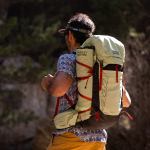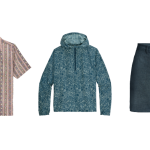March 9, 2020 – Women’s activewear sales in the U.S. remained flat in 2019 over the previous year, underperforming the men’s market which grew by 2%, according to The NPD Group. For a third consecutive year, men’s sales grew at a faster rate than women’s.
The U.S. adult activewear industry generated $50.3 billion in sales for 2019, with men’s accounting for 51% market share and women’s at 49%.
“The women’s athletic apparel market remains the sports industry’s greatest failure, yet its biggest opportunity. Traditional athletic brands continue to struggle at the expense of vertical brands. To be successful, brands and retailers of all sizes must put a lot of resources behind women’s product. Making a sincere connection and understanding where she shops are also essential,” said Matt Powell, senior vice president and sports industry advisor, The NPD Group. “Women’s sports will continue to thrive, as will the women who play them. It’s time to blow up the activewear retail model, which is not in sync with today’s woman.”
The trend of men’s growth outpacing women’s continues despite overall growth in women’s sports participation. For the first time in history, more women are running races than men.1 Furthermore, the number of women athletes at the Olympic Games is higher than ever, approaching 50%; female participation is expected to be 49% at this summer’s Tokyo Games.2
The majority of women’s activewear is purchased for leisure and performance occasions—with their primary intended use being casual/everyday use or athletic/sport/exercise—both of which experienced dollar sales declines in 2019. However, in line with fashion trends, there was growth in sales tied to school, work, and weekend occasions. Generationally speaking, older Millennials (ages 25-34) account for the largest portion of women’s activewear sales, yet in 2019 saw the sharpest decline of any age group. Looking at brands, specialty types including Lululemon and Athleta as well as adidas were among the top performers based on sales growth, while for men’s the growth was driven by more traditional brands such as Nike and Under Armour.
Globally, China is the second-largest activewear market behind the U.S. Similar to the U.S., men’s sales in China grew faster than women’s, +11%, though women’s sales still increased, by 8%. Across the 14 global activewear markets tracked by NPD, the fastest-growing countries for women’s sales in 2019 were Turkey, Russia, South Korea, and China.3
“These countries are growing fast because the activewear market is newer, with a much smaller base. Still, this brings with it lots of unknowns to be navigated. In a mature market like the U.S., growth needs to be found elsewhere,” said Powell. “With the women’s market failing to perform to its full potential, while holding almost the same market share as men, herein lies a renaissance opportunity to grow the entire market. Women also have great influence on the men’s and kids’ side of the business; once she’s in the door, she’s likely to buy for others in her life. Marketing to women can only be a win-win across the board.”
Source: The NPD Group/ Consumer Tracking Service/ 12 months ending December 2019
1Source: The State of Running 2019 (A report in conjunction with the International Association of Athletics Federations and RunRepeat.com)
2Source: The International Olympic Committee
3China coverage reflects the core 23 cities; Turkey the core 17 cities; Russia the core 16 cities






